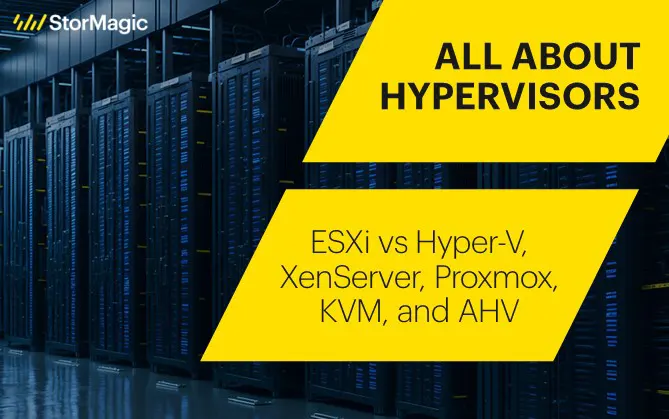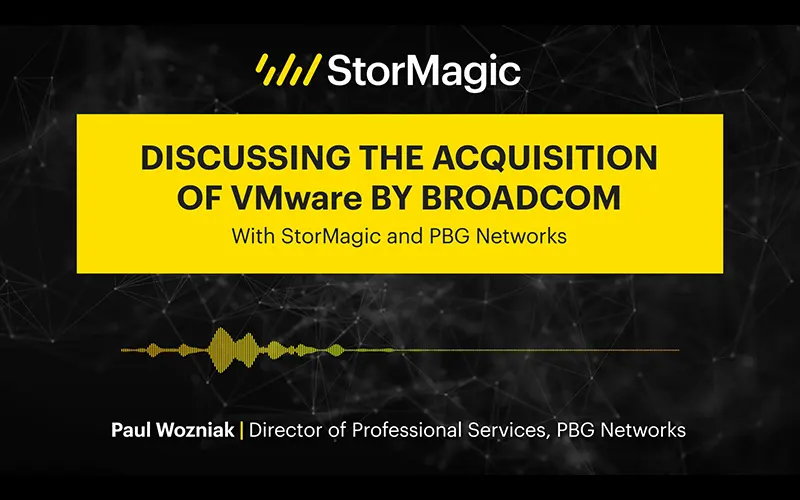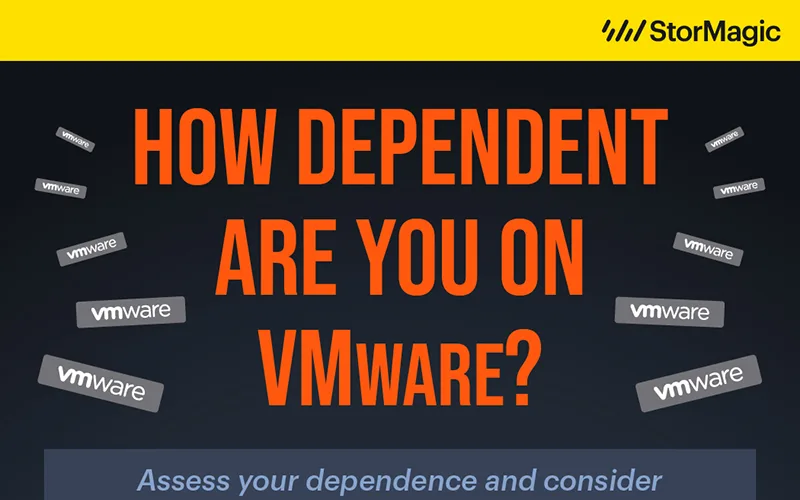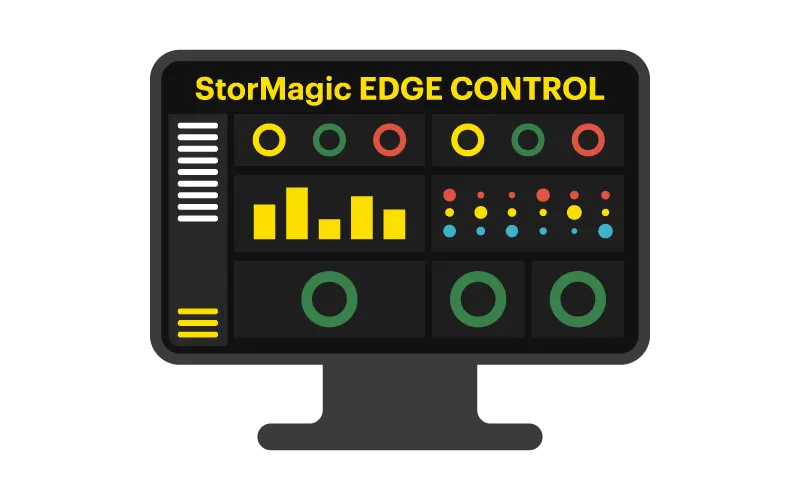In the ever-evolving landscape of Information Technology (IT), the role of virtualization has become indispensable, and at the heart of this transformative technology lie hypervisors. Also known as virtual machine monitors, hypervisors play a pivotal role in enabling the creation and management of multiple virtual environments on a single physical server. As organizations increasingly seek to optimize resource utilization, enhance scalability, and streamline maintenance processes, the significance of choosing the best hypervisor for their needs cannot be overstated. Let’s delve into the realm of common hypervisors in the IT industry, exploring their features, functionalities, and the impact they have on shaping the infrastructure of modern computing environments.
What is a Hypervisor?
A hypervisor, or virtual machine monitor (VMM), is software that manages virtual machines (VMs) and translates requests between physical and virtual resources. Hypervisors allow a single physical computer system (i.e. a host) to support multiple VMs (i.e. guests), by virtually sharing the host’s resources (i.e. memory, storage, and processing). There are two primary categories of hypervisors: Type I and Type II, each with distinct characteristics and use cases.
Type I Hypervisors: Bare-Metal Efficiency
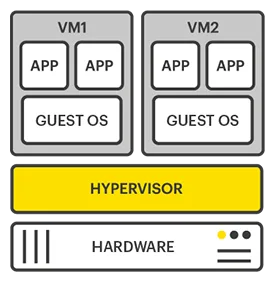 Type I hypervisors, also known as bare-metal hypervisors, operate directly on computer hardware without the need for an underlying operating system (OS). These hypervisors have exclusive control over the host’s resources, including CPU, memory, and storage. Some reach further into networking and GPU resources. By eliminating the overhead of an additional OS layer, Type I hypervisors often deliver superior performance and efficiency. They are commonly employed in enterprise environments and datacenters, where optimizing resource utilization and ensuring high performance are critical. Examples of Type I hypervisors include VMware ESXi, Microsoft Hyper-V, Linux KVM, and Xen.
Type I hypervisors, also known as bare-metal hypervisors, operate directly on computer hardware without the need for an underlying operating system (OS). These hypervisors have exclusive control over the host’s resources, including CPU, memory, and storage. Some reach further into networking and GPU resources. By eliminating the overhead of an additional OS layer, Type I hypervisors often deliver superior performance and efficiency. They are commonly employed in enterprise environments and datacenters, where optimizing resource utilization and ensuring high performance are critical. Examples of Type I hypervisors include VMware ESXi, Microsoft Hyper-V, Linux KVM, and Xen.
Type II Hypervisors: Hosted Flexibility
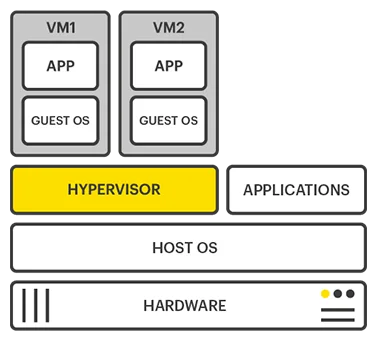 In contrast, Type II hypervisors, also known as hosted hypervisors, rely on an underlying OS for resource management. These hypervisors are installed on top of an existing OS and leverage the host OS to access hardware resources. While they introduce an additional layer and can exhibit more overhead compared to Type I hypervisors, Type II hypervisors offer greater flexibility. They are commonly used in scenarios such as desktop virtualization, software development, and testing environments. Examples of Type II hypervisors include VMware Workstation, Oracle VirtualBox, and VMware Fusion.
In contrast, Type II hypervisors, also known as hosted hypervisors, rely on an underlying OS for resource management. These hypervisors are installed on top of an existing OS and leverage the host OS to access hardware resources. While they introduce an additional layer and can exhibit more overhead compared to Type I hypervisors, Type II hypervisors offer greater flexibility. They are commonly used in scenarios such as desktop virtualization, software development, and testing environments. Examples of Type II hypervisors include VMware Workstation, Oracle VirtualBox, and VMware Fusion.
Choosing between Type I and Type II hypervisors depends on specific use cases and performance requirements. Type I hypervisors are favored in production environments, where optimal resource utilization and performance are paramount. On the other hand, Type II hypervisors provide a more accessible and user-friendly approach, making them suitable for scenarios where flexibility and ease of use are primary considerations, such as in desktop virtualization and development environments. The selection between these two types reflects a balance between performance and convenience based on the intended virtualization use case.
Key Benefits of a Hypervisor
Leveraging a hypervisor to host multiple virtual machines is beneficial for a number of important reasons, including:
- Easier to provision resources for dynamic workloads
- Enables users to create virtual machines instantly
- Improves efficiency by only requiring one physical server versus multiple
- Allows organizations to be hardware-agnostic, since the hypervisor separates the operating system from the underlying hardware
- Increases flexibility by allowing VM and virtual storage migration, and letting IT teams shift workloads across multiple servers, i.e., load balancing, fault tolerance, and disaster recovery
- Increases security since virtual machines are isolated from each other. Hypervisors help enforce policies for access control, encryption, replication, and backup to protect data from unauthorized access, corruption, or loss
- Enables users to run multiple instances and versions of operating systems on the same hardware
Organizations choose hypervisors for their IT environment according to various requirements and preferences. Let’s consider the most popular hypervisors deployed in production environments.
VMware ESXi
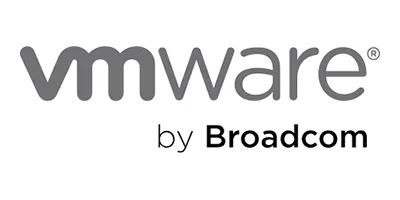 VMware ESXi stands out as a prominent and widely adopted Type I hypervisor, known for its robust virtualization capabilities and efficient resource management in enterprise environments. Developed by VMware, ESXi is a bare-metal hypervisor that runs directly on the hardware of a physical server, providing a foundation for the creation and management of virtual machines.
VMware ESXi stands out as a prominent and widely adopted Type I hypervisor, known for its robust virtualization capabilities and efficient resource management in enterprise environments. Developed by VMware, ESXi is a bare-metal hypervisor that runs directly on the hardware of a physical server, providing a foundation for the creation and management of virtual machines.
One of the key strengths of VMware ESXi is its comprehensive suite of features for managing virtualized environments. vSphere, the associated management platform, enables centralized control and monitoring of multiple ESXi hosts. Administrators can efficiently allocate and balance resources, manage storage, and ensure high availability through features like vMotion for live VM migration and vSphere High Availability for automatic VM restart in case of host failures.
The widespread adoption of VMware ESXi is indicative of its reliability, performance, and feature set, making it a frequent choice for organizations seeking the benefits of server virtualization. However, VMware’s acquisition by Broadcom in 2023 resulted in changes to product licensing, support models, and integration with other technologies requiring ESXi users to adapt or reassess their virtualization infrastructure.
Microsoft Hyper-V
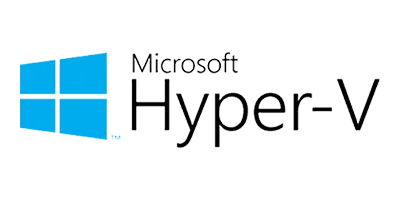 Hyper-V is a Type I hypervisor developed by Microsoft for Windows Server environments and Windows operating systems. Microsoft Hyper-V is a built-in component of all modern versions of Windows. Therefore, users don’t need to purchase any additional software from Microsoft to utilize Hyper-V. Owning a license for a modern Microsoft OS will ensure Hyper-V is available at the user’s disposal.
Hyper-V is a Type I hypervisor developed by Microsoft for Windows Server environments and Windows operating systems. Microsoft Hyper-V is a built-in component of all modern versions of Windows. Therefore, users don’t need to purchase any additional software from Microsoft to utilize Hyper-V. Owning a license for a modern Microsoft OS will ensure Hyper-V is available at the user’s disposal.
Hyper-V runs directly on the host computer hardware. For Windows users, a clear advantage is the close connection to the operating system. It can be managed through Hyper-V Manager, a graphical user interface, or through PowerShell for command-line administration. Additionally, Hyper-V can be integrated with Microsoft’s System Center Virtual Machine Manager (SCVMM) for centralized management and advanced features like live migration, network virtualization, and dynamic optimization.
With its strong ties to the Microsoft ecosystem, Hyper-V has become a popular choice for organizations that rely heavily on Windows environments. It offers a robust and scalable virtualization solution, allowing businesses to deploy and manage virtualized workloads across their infrastructure.
XenServer (Citrix Hypervisor) / XCP-ng
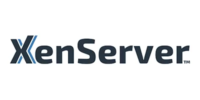 XenServer is a feature-rich Type I hypervisor designed for server virtualization. Note that XenServer and Citrix Hypervisor refer to the same hypervisor product developed by Citrix Systems. The product was initially known as XenServer, as it is based on the open-source Xen Project, however it was rebranded as Citrix Hypervisor as Citrix has continued to develop and enhance it over time.
XenServer is a feature-rich Type I hypervisor designed for server virtualization. Note that XenServer and Citrix Hypervisor refer to the same hypervisor product developed by Citrix Systems. The product was initially known as XenServer, as it is based on the open-source Xen Project, however it was rebranded as Citrix Hypervisor as Citrix has continued to develop and enhance it over time.
After Citrix was merged with TIBCO Software in September 2022, thereby creating the Cloud Software Group (CSG), it was revealed that XenServer would become a standalone business entity instead of just a Citrix product.
If licensing cost is a concern or an open-source solution is preferred, a recent (2018) open-source project called XCP-ng (Xen Cloud Platform – Next Generation) provides access to the same Xen hypervisor features for free. XCP-ng aims to be feature-compatible with Citrix Hypervisor, and it continues to develop and add new features to its platform. XCP-ng includes many of the core virtualization features found in XenServer. However, the latter offers additional proprietary features, management tools, and integrations with other Citrix products.
Ultimately, the choice between XCP-ng and Citrix Hypervisor may depend on factors such as licensing preferences, support requirements, and the need for specific features or integrations. Both platforms offer solid virtualization solutions based on the Xen Project, catering to different user preferences and use cases.
Proxmox VE
 Proxmox Virtual Environment (Proxmox VE) is a powerful open-source Type I hypervisor that combines two virtualization technologies, namely KVM for virtual machines and LXC (Linux Containers) for lightweight container-based virtualization. Developed by Proxmox Server Solutions GmbH, this hypervisor offers a comprehensive, integrated platform for managing virtualized environments, making it a popular choice for organizations seeking a flexible and cost-effective solution.
Proxmox Virtual Environment (Proxmox VE) is a powerful open-source Type I hypervisor that combines two virtualization technologies, namely KVM for virtual machines and LXC (Linux Containers) for lightweight container-based virtualization. Developed by Proxmox Server Solutions GmbH, this hypervisor offers a comprehensive, integrated platform for managing virtualized environments, making it a popular choice for organizations seeking a flexible and cost-effective solution.
Proxmox VE provides a web-based management interface, allowing users to efficiently create, configure, and monitor virtual machines and containers. The inclusion of a user-friendly interface simplifies complex tasks, making it accessible to both novice and experienced users. The platform also supports a range of storage options, including local storage, NFS, and iSCSI, providing flexibility in designing storage architectures to meet diverse requirements.
One notable feature of Proxmox VE is its clustering capability, enabling the creation of high availability clusters for enhanced reliability. Additionally, Proxmox VE supports live migration, facilitating the seamless movement of virtual machines between physical hosts without disruption.
Overall, Proxmox VE stands out as a robust and feature-rich hypervisor, offering a compelling alternative for organizations seeking an open-source solution with a powerful set of virtualization tools and management features. A free perpetual Proxmox VE version is available without feature limitations if support is not required.
Linux KVM
 Kernel-based Virtual Machine (KVM) is an open-source Type I hypervisor that is integrated into the Linux kernel. This is one of its notable strengths: since it is part of the mainline kernel, KVM benefits from the ongoing development and support of the larger Linux community. This facilitates seamless interaction with various Linux components and technologies, making it a natural choice for organizations that rely heavily on Linux-based infrastructure.
Kernel-based Virtual Machine (KVM) is an open-source Type I hypervisor that is integrated into the Linux kernel. This is one of its notable strengths: since it is part of the mainline kernel, KVM benefits from the ongoing development and support of the larger Linux community. This facilitates seamless interaction with various Linux components and technologies, making it a natural choice for organizations that rely heavily on Linux-based infrastructure.
KVM supports a wide range of guest operating systems, including various Linux distributions, Windows, and others. It also supports live migration, allowing administrators to move running VMs between different hosts without noticeable service disruption.
Management of KVM-based virtualized environments is often done through tools like libvirt and QEMU. Libvirt provides a standardized interface for managing virtualized platforms and supports various virtualization technologies, including KVM. QEMU, on the other hand, is an open-source emulator that KVM utilizes to execute and manage virtual machines.
As an open-source solution, KVM has gained popularity in both traditional datacenter settings and emerging cloud computing platforms. Its strong integration with Linux, performance efficiency, and support for a diverse range of guest operating systems contribute to its standing as a reliable and versatile hypervisor in the world of virtualization.
Nutanix Acropolis
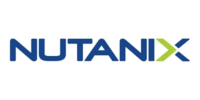 Nutanix Acropolis Hypervisor (AHV) is a commercial Type I hypervisor developed by Nutanix, a prominent player in the hyperconverged infrastructure (HCI) market. AHV is designed to serve as a part of the Nutanix Enterprise Cloud Platform, offering virtualization capabilities to organizations seeking a streamlined infrastructure solution.
Nutanix Acropolis Hypervisor (AHV) is a commercial Type I hypervisor developed by Nutanix, a prominent player in the hyperconverged infrastructure (HCI) market. AHV is designed to serve as a part of the Nutanix Enterprise Cloud Platform, offering virtualization capabilities to organizations seeking a streamlined infrastructure solution.
AHV is based on the open-source KVM hypervisor and includes standard features such as live migration and VM-centric snapshots. Nutanix Prism, the management interface for AHV, provides a user-friendly and centralized control panel for administrators to handle tasks such as VM provisioning, monitoring, and maintenance. With its integration within the Nutanix ecosystem, AHV has gained popularity among organizations looking for a HCI solution with an integrated hypervisor component.
Choosing the Right Hypervisor
Choosing the right hypervisor is a critical decision that significantly impacts the efficiency, performance, and scalability of an organization’s virtualized infrastructure. With various options available in the market, each catering to different needs and preferences, it’s essential to carefully assess requirements and consider several key factors to make an informed decision.
- Compatibility. Ensure that the hypervisor seamlessly integrates with existing hardware, software, and networking components. Compatibility extends beyond the immediate environment, including support for operating systems, applications, and storage solutions. This ensures a smooth transition to virtualization without disruptions to current workflows.
- Performance. Evaluate the hypervisor’s ability to optimize resource utilization, minimize latency, and provide efficient load balancing. Different hypervisors may excel in specific use cases, so the choice should align with workload demands. Assess factors such as memory management, CPU utilization, and storage I/O performance to guarantee optimal functionality for unique business requirements.
- Scalability. Choose a hypervisor that can easily scale with business growth, accommodating an increasing number of virtual machines and adapting to changing workloads. Look for features like live migration and dynamic resource allocation to ensure the infrastructure remains agile and responsive to evolving demands.
- Security. Evaluate the hypervisor’s security features, including access controls, encryption, and isolation mechanisms. Robust security measures are essential to protect the virtualized environment from potential threats, ensuring the integrity and confidentiality of data.
- Ease of management. Opt for a hypervisor with a user-friendly interface and comprehensive management tools, including access to API and CLI. Centralized management capabilities streamline administrative tasks, reduce complexity, and empower the organization’s IT team to efficiently monitor and troubleshoot issues.
- Vendor ecosystem and support. A vibrant and supportive community, regular updates, and 24/7 customer support are essential for a smooth virtualization experience. Assess the vendor’s reputation, customer reviews, and the availability of documentation and training resources.
- Budget. It is essential to strike a balance between upfront expenses and long-term value. Carefully evaluate licensing models, TCO, hardware requirements, and ongoing support.
By carefully considering these factors in line with the organization’s specific needs, a hypervisor can be selected that not only meets current requirements but also sets the foundation for a resilient and agile virtualized infrastructure.
Take your virtualization environment to the next level
Whether expanding existing virtualized infrastructure, migrating infrastructure to another hypervisor or just considering an initial move into virtual machines, organizations shouldn’t forget to consider high availability for data storage. StorMagic SvSAN delivers highly available hyperconverged storage using only two servers and protects data with encryption features and key management. We will work to tailor SvSAN to any IT environment regardless of hypervisor choice.

